From the September 2022 issue of Apollo. Preview and subscribe here.
It is high summer, the temperature is 40°C, and in a conifer-screened corner of the baroque Karlsaue Park in Kassel, central Germany, a transparent banner printed with images of trees flutters delicately above the area’s main feature: an overgrown, oozing compost heap.
This is one of the installations at Documenta 15, the latest edition of the five-yearly mega-exhibition (until 25 September). It is the work of an Argentinian collective, La Intermundial Holobiente. Next to the massive heap is a shed housing a book which they have imagined as ‘written by a non-human being’ and a young, all-too-human attendant, overcome by sleep in the sweltering heat.
Founded in 1955 by Arnold Bode as part of Germany’s post-war de-Nazification project, the first Documenta showed the kind of radical artists – Max Beckmann, Marc Chagall, Otto Dix and Pablo Picasso – the Nazis derided. Subsequently, it invented the idea of the auteur curator, heralded the 1980s return to expressive painting and expanded the artistic canon beyond white, Western artists. It is a show that many in the contemporary art world consider as influential as the Venice Biennale, or more so. This edition, an exhibition made by collectives which exhorts us to ‘Make friends not art!’ is possibly its most challenging yet – but much of the art world, and the art market in particular, isn’t coming.
A dismissive mood was discernible during Art Basel, the world’s leading contemporary art fair, which opened the same week. Many felt what was likely to be on show would ‘not be art’ or did not like the fact so few of the artists were well-known. ‘It was noticeable that smart, otherwise travel-obsessed members of the art tribe were declaring “I’m not going” – almost like a protest,’ says András Szántó, a sociologist and journalist who advises institutions and is the author of The Future of the Museum. (2020). ‘There was a sense of this show being a challenge to the ways the art world operates. That makes some people uncomfortable.’
Some, of course, visited both: attending the three Art Basel preview days then taking the 500km train ride to Kassel. But familiar faces at Documenta were few, while Instagram suggested that an exodus from Basel to places such as Menorca, where Hauser & Wirth has a big gallery complex, and the Aegean island of Hydra, where collector Dakis Joannou holds court, was well under way. Calls and emails to find gallerists and collectors who had visited Documenta were largely unsuccessful.
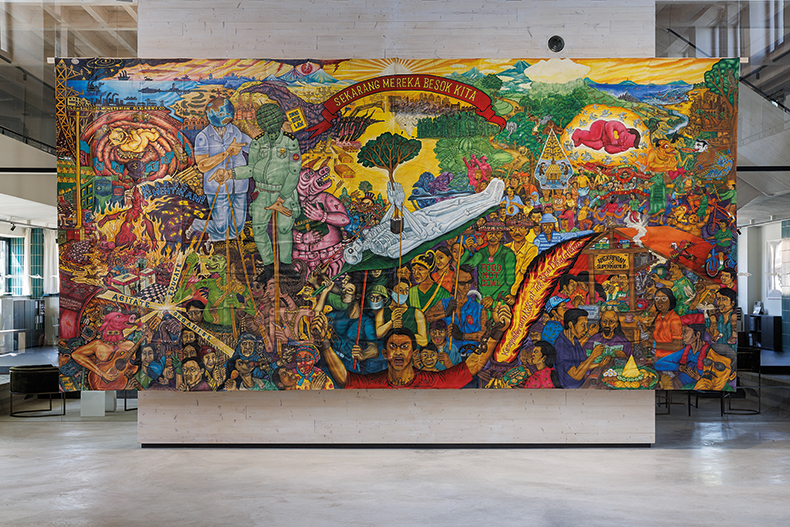
Installation view of Sekarang Mereka, Besok Kita (Today they’ve come for them, tomorrow they come for us) (2021) by Taring Padi at Hallenbad Ost, Kassel, for Documenta 15. Photo: Frank Sterling
This is despite the fact that Documenta is one of the most expensive of the ‘perennials’ on the art world calendar. This edition cost around €42 million (£35 million), much of it from public funds. It has been directed by ruangrupa (the name roughly translates as ‘space for art’), an Indonesia-based collective of about 10 artists, architects and designers. They were selected by leading curators, including Frances Morris, director of Tate Modern, and Charles Esche, director of the Van Abbemuseum in the Netherlands. Once selected, ruangrupa announced it would further devolve power and funding, appointing five individual advisers and 14 founding collectives, who in turn invited another 53 artists and groups, who conducted assemblies (majlis) to plan the exhibition. More than 1,500 artists are showing in Kassel across 32 sites.
Most come from Asia, the Middle East, South America and Africa. As few as 10 are believed to have commercial gallery representation. That is, of course, part of the point. Last year, Esche remarked that a founding principle was ‘to use [this] Documenta as a platform to encourage understanding of artistic production that has a greater autonomy from the art market than has traditionally been the case’.
Ruangrupa goes further, positioning itself as ignoring ‘the old system of doing things’. This includes reliance on ‘state funding, free art-market systems and biennial circuits’, which ‘have proven to be highly competitive, globally expansive, greedy and capitalistic – in short, exploitative and extractive’.
Confronting visitors in Kassel is a sprawling mix of installations, hangout spaces, practical workshops and archives documenting the history of collectives. There is colourful art by Hungarian Roma painters, including gorgeous tapestries by Malgorzata Mirga-Tas. There are large-scale abstract paintings by the Turner-nominated Project Art Works – a Hastings-based charity that works with neurodiverse people. There is a magical shadow-play by Vietnamese artist Nguyen Trinh Thi, installed in a 16th-century tower – subsequent reading revealed it refers to a 1970s detention camp. Dark issues abound at this Documenta, often lightly handled: the legacies of dictatorships and war, exploitation driven by globalisation and industry, and landscapes laid waste by climate change.
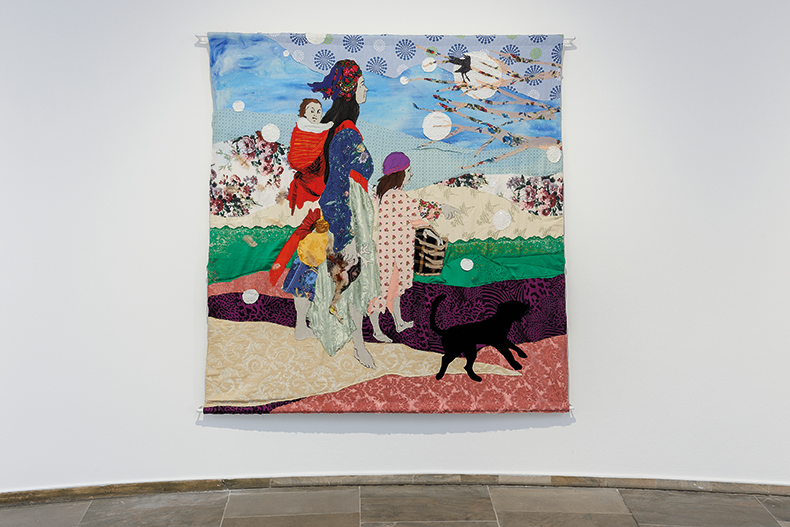
Installation view of a patchwork from the series Out of Egypt (2021) by Małgorzata Mirga-Tas at Fridericianum, Kassel for Documenta 15. Photo: Frank Sterling
There is also fun: a skateboarding slope in the Documenta Halle, drop-in communal cooking sessions by Bangladesh-based collective Britto Arts Trust, impromptu rock concerts by Indonesian collective Taring Padi, even a BDSM nightclub – organised by the Delhi-based Party Office – in a warehouse basement. There are several events each day for the full 100 days: poetry readings, history discussions, meditation, photography classes and DJ sets, among many others.
A resourceful, experimental art school feel pervades the show that makes visitors feel that they too are creative and can – if they want – take part and be part of something bigger. In the 18th-century Fridericianum, the central venue, the Tunisian collective El Warcha pioneers collaborative, process-oriented design in galleries converted into studios: metal chairs are transformed into load-bearing arches, a floating cinema designed for the coastal city of El Kram is repurposed for a river in Kassel. The approach has been so successful that El Warcha (Arabic for ‘workshop’) is putting on projects in Lisbon, London and Davis, California.
The opportunity to see so many artists who make work from non-Western art perspectives is rare. They are largely producing in a language of craft, protest or religion. In St Kunigundis Roman Catholic church, Haitian collective Atis Rezistans has mounted an exhibition of sculptural assemblages of found and recycled materials – wood, iron nails, beads – as well as human remains. Two huge crosses, made out of perforated steel drums, flank the church door. The objects are powerful, silent and not a little disconcerting, evocatively installed in an apparently traditional interior (which is actually pre-stressed concrete).
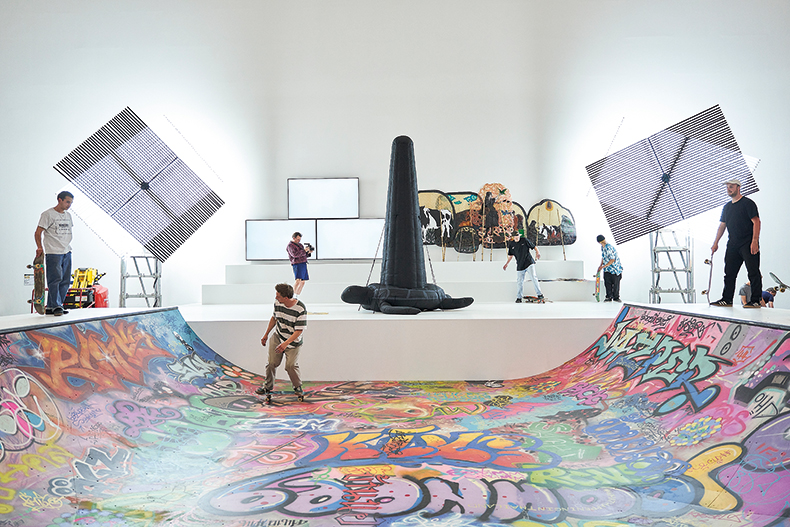
Installation view of The Rituals of Things (2022) by Baan Noorg Collaborative Arts and Culture at Documenta Halle, Kassel for Documenta 15. Photo: Nicolas Wefers
The downsides of Documenta are the same as many contemporary biennales: too many cases filled with documentation, too much archival material, too many empty debating spaces – shows are rarely at their best when they are didactic. A promising-looking discussion in a sun-drenched courtyard with a bar on hand – ‘Undoing Documenta’ by the team behind LE 18, a Marrakesh cultural space – turned out awkward and a bit boring.
Worse, the lack of strict curatorial control has led to the discovery of anti-Semitic imagery in some of the collectives’ works and a row that escalated almost out of control. In July, Documenta’s director general was forced to step down when two anti-Semitic caricatures were found in a Taring Padi banner (filled with a huge cast of characters, it depicted the street fighting that led to the fall of the Suharto dictatorship, and the regime’s alleged backers, in 1998). At the time of going to press a new row, over a drawing in the Archives of Women’s Struggles in Algeria presentation, was threatening to derail the whole exhibition.
This was all a long way from Art Basel, which was packed with highly commercial, decorative paintings as it returned to its traditional June slot for the first time since 2019. Three days before the Taring Padi row blew up, thousands of collectors and gallerists flew in, many on private jets. According to gallery reports, more than £130m of art was sold on the opening day. That largely went on paintings by famous artists, including Alex Katz and Georg Baselitz, or hot young stars such as Jenna Gribbon, Avery Singer and Robert Nava.
Ruangrupa’s show may be for many a step too far, but it is representative of what is, for museums, becoming a mainstream direction of travel. Katerina Gregos, a highly respected biennial curator and the new director of the National Museum of Contemporary Art in Athens, calls it ‘a truly radical exhibition: ruangrupa’s idea to privilege grassroots organisations and the “global south” turns the art world on its head’. There ‘wasn’t so much that was visually engaging’, she adds, ‘but then, that is considering the show interms of Western ideas of what constitutes an exhibition’. Morris says that the show is ‘a case study in how we [at Tate Modern] might do things differently’, while Szántó says ‘there’s a profound questioning of all things institutional… it’s an exhibition that all museum directors should see.’
The institutional art world – responding to current political concerns – is becoming ever more deeply engaged in issues such as decolonisation, identity, anti-elitism, anti-racism and the attendant ills of globalisation, especially climate change: concerns that only lightly touch its commercial counterpart. This Documenta highlights the gulf that currently separates the two scenes. If both are to move forward, they need to find artists who marry a concern for the aesthetic with meaningful content. Basel and Kassel may be only four hours away from each other, but in terms of the art and ideas they are showing, they are worlds apart.
From the September 2022 issue of Apollo. Preview and subscribe here.
Unlimited access from just $16 every 3 months
Subscribe to get unlimited and exclusive access to the top art stories, interviews and exhibition reviews.

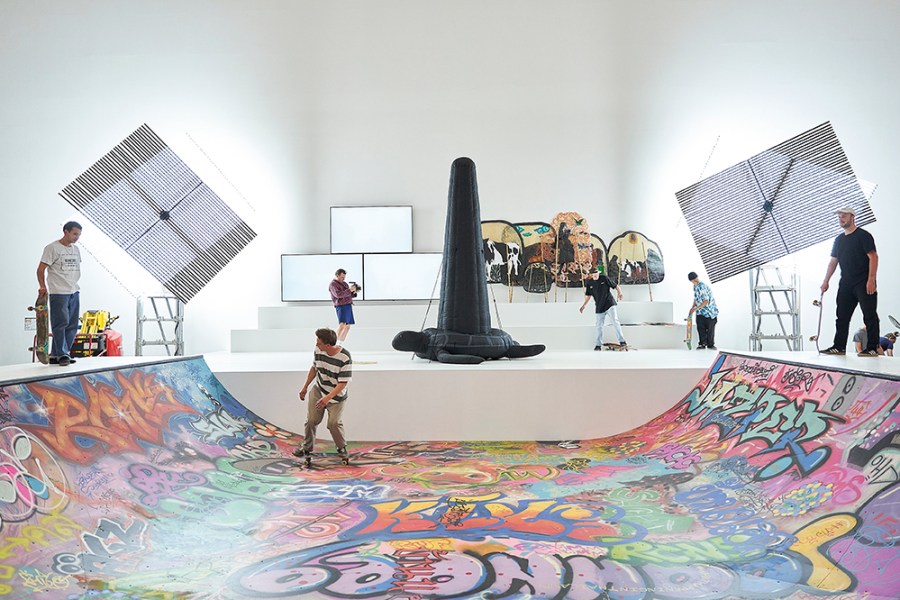
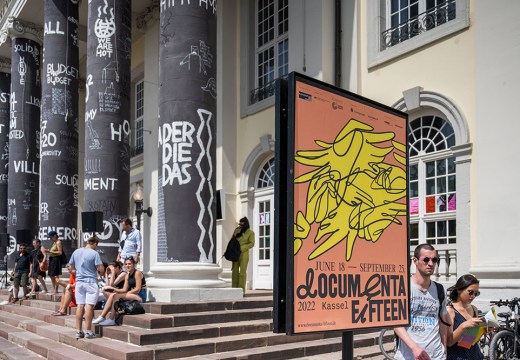
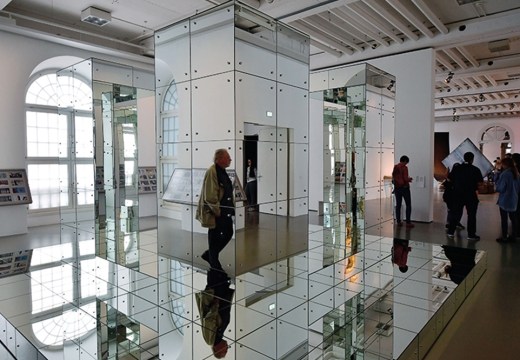










![Masterpiece [Re]discovery 2022. Photo: Ben Fisher Photography, courtesy of Masterpiece London](http://www.apollo-magazine.com/wp-content/uploads/2022/07/MPL2022_4263.jpg)
It’s time for the government of London to return to its rightful home